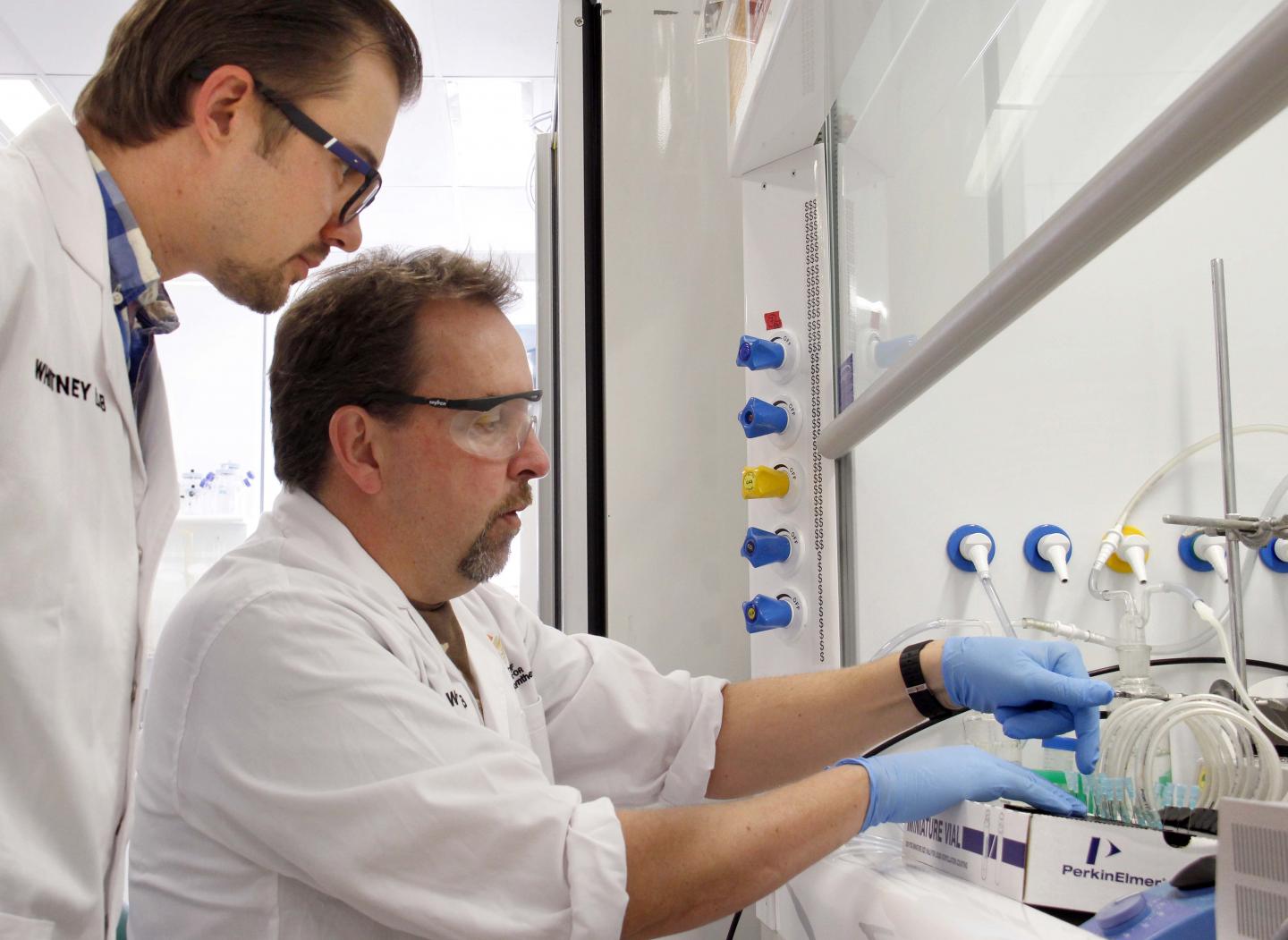The Rubisco enzyme, the most abundant protein on the planet, has one of the most significant responsibilities in life on Earth - the conversion of carbon dioxide to organic compounds, the building blocks of all plant and animal cells.
Given its importance, it is also something of a mystery, because after untold ages of evolution, it is thousands of times less efficient at its job than most other enzymes. Much of the inefficiency stems from the highly complex structure of Rubisco. It is an enzyme with 16 pieces that requires the assistance of more than 12 other proteins to assemble it correctly.
A new study shows how to give nature a tremendous boost and important staple crops, such as wheat, cotton and rice, stand to benefit. Boosting the photosynthetic rate in crop plants will boost food security for billions of people.

Maxim Kapralov (L) and Spencer Whitney. Credit: Charles Tambiah / ARC-CoETP
"We focused on one of Rubisco's partner proteins, called RAF1. By supplying a Rubisco with its partnering RAF1 we found the amount of Rubisco produced in leaves could be more than doubled," says Dr. Spencer Whitney from The Australian National University (ANU) who was leader of the research team from the ARC Centre of Excellence for Translational Photosynthesis. "Understanding the partnership with RAF1 has important implications with regard to ongoing efforts to accelerate the sluggish activity of Rubisco - a key goal for improving crop productivity."
The study shows Rubisco and RAF1 have evolved together. Changes in one protein requires a balancing change in the other. "We improved the production of a modified Rubisco in leaves by inserting a modified complimentary version of RAF1," Whitney said. "Including RAF1 caused Rubisco's levels to double, and as a result, we obtained faster rates of photosynthesis and plant growth compared to the plants where RAF1 was not introduced. The finding also explains why our prior attempts to insert more efficient versions of Rubisco from some algae into plant leaves have failed - they require different chaperones to those available in leaf cells."
Published in PNAS. Funded by the Australian Research Council (ARC) and the Realizing Increased Photosynthetic Efficiency (RIPE) project.





Comments